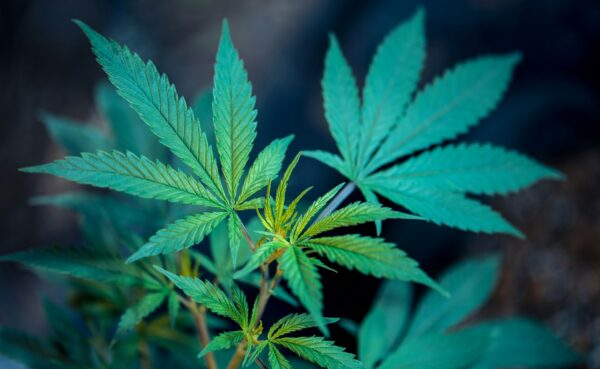Have a question? 06 70 73 89 02
🔞 Not for sale to under 18s
✨ 15% off EVERYTHING on the site with the code BON2026 🥳 ( except accessories and gummies)
Have a question? 06 70 73 89 02

THM or "The Hot Mix" is a new range of products available in our store. A cocktail of CBG, CBN, CBC, CBDP and CBD, these molecules enter into synergy through a powerful entourage effect. The result is great relaxation for body and mind. This type of product is currently flourishing in many CBD shops. It goes by the name of Raf, MCPN or CBDX.
We have already discussed the entourage effect and the effects of THM in our previous article. Now, let's take a look at each cannabinoid.
You probably know all there is to know about CBD, so to put it simply: CBD or cannabidiol is the second most concentrated cannabinoid in natural cannabis. First discovered in 1940 by Roger Adams, it is known for its non-psychotropic, non-addictive and non-addictive properties, as well as its beneficial effects on stress, anxiety and chronic pain.
CBG, or cannabigerol, is one of some 200 secondary cannabinoids found in hemp and cannabis. Its discovery in the 1960s revolutionized our understanding of cannabinoids, and with good reason: it is the building block on which other cannabinoids depend. During hemp growth, certain enzymes convert CBG into different cannabinoids. Without CBG, the natural synthesis of CBD, THC and all other cannabinoids would be impossible.
Like CBD, it is non-psychoactive, non-addictive and fully legal in France and Europe. Although research on the subject is still sparse. Some preliminary studies suggest that it may have several beneficial effects, such as a neuroprotective action, an anti-inflammatory effect, and may be able to reduce certain urinary disorders.
But like CBD, CBG is especially capable of acting positively on GABA neurotransmitters, resulting in :

Cannabinol (cbn) is a rather unusual cannabinoid. It is not synthesized directly by the plant. It's produced by the oxidation of THC during the drying process. The THC molecule, which is not very stable, is degraded by air and sunlight and transformed into CBN. For this reason, higher levels of CBN are found in Colombian and Mexican varieties, which are traditionally sun-dried.
CBN is known for its powerful sedative effect. Some consider it the most effective sedative of all cannabinoids. This effect wears off within a few hours, and is said to have a beneficial effect on sleep and memory. However, some small-scale studies suggest that it does not produce these sedative effects directly, but rather produces an entourage effect that has a particular influence on THC, leading to this effect.
Like other cannabinoids, it doesn't share the psychoactive effects of THC or HHC, nor does it produce habit-forming effects or known long-term deleterious effects. If you're interested in CBN, take a closer look at this article on THCN, a CBD flower infused in a high-concentration CBN isolate.
After THC and CBD, CBC or cannabichromene is the third highest concentration in cannabis. It was discovered in 1966 by the famous and renowned Professor Mechoulam. This cannabinoid is mainly found in young plants, and its levels decrease as the plant grows. To obtain a high level of CBC, one solution is to harvest before the plants are fully matured, and use a very short curring.
In terms of effects and action, it's quite similar to CBN, capable of a powerful entourage effect, multiplying the effect of other cannabinoids.
Nonetheless, research conducted in the 2010s has shown that BCC has an antidepressant effect 10 times more powerful than CBD, as well as neuroprotective, anti-inflammatory and pain-relieving properties.
CBDP or cannabidiphorol is a minor cannabinoid present in very small quantities in hemp (less than 0.01%). Discovered in 2021 at the same time as THCP, now banned, CBDP acts as a CBD counterpart. Like THCP in relation to THC, CBDP is very close to CBD.
It differs only in the length of its side chain, which contains more atoms. Discovered just over 3 years ago, there have been few studies carried out on CBDP. We still know very little about this cannabinoid, but what we do know is that: this extra length enables it to bind more strongly with the endocannabinoid system. It creates effects more or less similar to the molecule with which it is associated, but with greater intensity.
But unlike THC-p, CBDP is a non-psychoactive molecule that does not create an addictive effect, so it should not develop these characteristics either.
As you can see, THM contains only cannabinoids naturally present in hemp. However, these are found at varying levels, and some, like CBD-p, at very low levels.
THM composition therefore requires the chemical creation of CBG, CBC, CBN and CBDP. These are then dosed, mixed and incorporated into the plants.
As you may have noticed from the description of each of these elements, none of the cannabinoids present in THM produce psychoactive effects. But almost all are capable of entourage effects. Some claim that this type of product is capable of creating an effect comparable or even stronger than HHC or HHCPO.
But this effect is supposed to vary from person to person, so if you've tried this product, give us your opinion and tell us what you thought in the comments!